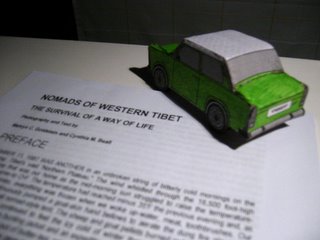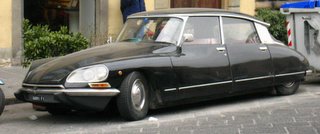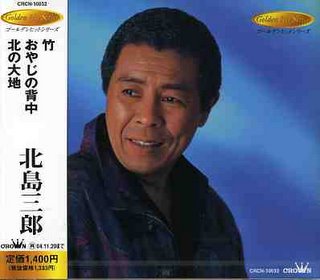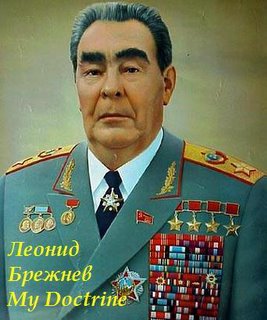
-benvinguts - welcome - bienvenidos - bienvenus - willkommen - ようこそ - benvenuti - bem-vindo - ongi etorri - 欢迎 - witam -
Sunday, 31 March 2013
COM ÉS QUE NO ENS CONEIXÍEM?!

Wednesday, 13 February 2013
かわいさ (可愛さ)
.jpg)
 Could a Reliant Robin be considered cute?How is it that we might be able to find cuteness (かわいさ (可愛さ), kawaisa in romaji transcription), in things considered "ugly" by many? I do find this car "cute" (the older versions, in fact) maybe because of the colourful versions, the simple and unaggressive aesthetics, the vulnerability of being a 3-wheeled creature, its appearance, close to that of some sort of kind creature...
Could a Reliant Robin be considered cute?How is it that we might be able to find cuteness (かわいさ (可愛さ), kawaisa in romaji transcription), in things considered "ugly" by many? I do find this car "cute" (the older versions, in fact) maybe because of the colourful versions, the simple and unaggressive aesthetics, the vulnerability of being a 3-wheeled creature, its appearance, close to that of some sort of kind creature...Tuesday, 11 December 2012
Having a good Старт
Sunday, 30 October 2011
más preciosuras

Monday, 2 May 2011
fuego viejuno et al.
 Mai se sap quan ens creuem amb criatures mítiques de l'automoció...Feia molt de temps que no veia un Renault Fuego i, sense esperar-ho, allà aparcat prop de cas
Mai se sap quan ens creuem amb criatures mítiques de l'automoció...Feia molt de temps que no veia un Renault Fuego i, sense esperar-ho, allà aparcat prop de cas
 a n'hi havia un. Per la matrícula...segurament de 1982 ò 1983 (el Renault 14 que teniem a casa era FG i era de 1982).
a n'hi havia un. Per la matrícula...segurament de 1982 ò 1983 (el Renault 14 que teniem a casa era FG i era de 1982).Fa no massa, per motius desconeguts, es van poder veure diversos cotxes antics (ben cuidats) en desfilada. Diversos SEAT, alguns esportius i més de 2 i més de 3 Renault 8, que també costa de veure. Ben corprenedor el model en groc, ben lluent...Sort dels mòbils moderns amb càmara de fotos de qualitat...
Monday, 26 February 2007
URGA en vermell lluminós
De 25 a 26 de febrer, en el mig, un somni estrany. Tren cap a Urga. Un renfe-tren, vermell, com els regionals vells (estil dels que van cap a Cerbère). Lletres vermelles del davant que deien “urga”. URGA en vermell lluminós. No era el tren que esperava però alguna cosa em deia al somni que aquell tren cap a Urga també em duia per on havia de passar. Jo feliç en el tren que anava cap a Urga.
УРГА
I a mig camí el tren esdevenia autobús. Conductor amable. Vaig baixar del vehicle en aquesta ciutat (perquè jo no anava cap a Urga en el somni) i el vehicle desapareixia no sabent si arribava a Urga. I començà un altre somni que ja no recordo.
Urga que no era Urga i tren que no era tren.
Wednesday, 16 August 2006
Die fliegende Trabis und die Pechvögel
Saturday, 29 April 2006
A DeLorean and Bhutan
 Today I went with a couple of friends to see a documentary film on Bhutan , “the dragon house” (check: http://www.baff-bcn.org/film.php?id_pelicula=92&lang=eng). It wasn’t a typical documentary and there was many more people there than we expected. And the movie was greater than I expected.
Today I went with a couple of friends to see a documentary film on Bhutan , “the dragon house” (check: http://www.baff-bcn.org/film.php?id_pelicula=92&lang=eng). It wasn’t a typical documentary and there was many more people there than we expected. And the movie was greater than I expected.Thursday, 2 February 2006
Trabaru and momos
 Finally yesterday took place the dinner (dinnersession v.0.1 beta, since one person was missing due to some illness) we had been trying to arrange for some time. And this time, escaping from the lunch menu at the tibetan restaurant we went to, we could find a wide range of dishes willing to be tasted...including momos, which i hadn't tasted yet (momos weren't in the lunch menu the other times i went to that restaurant). Ah...the world of momos...momos, gyoza, pierogi (polish), ravioli, and the less unknown variants. There are always variants ready to appear at the less expected moment, just like another polish version of something...well, not exactly a version but an hybrid, the trabaru. Basic Mathematics: Trabant+ Subaru Impreza= Trabaru (impreza). Quite obvious, but it didn't come to the mind of Germans (East Germans in this case), who gave birth to Trabant in Zwickau. I can affirm so on the basis of the results for trabaru in Google (uuuh...so scientific!), which on the whole (well, almost) show links to pages in Polish...Sites of, by or for trabaru or any kind of customised trabant lovers...The possibilities of a Trabi are almost as many as those of momopierogigyozaetc. A Trabi can be used as a car, obviously, but also, as a sculpture/decorative structure for your house (i've heard of one case of somebody having a trabi inside a room, lucky one), as a charriot, as something for unknown purposes, like an image of a trabi, in oblivion, somewhere in Mongolia, next to some ger..how did a trabi reach Mongoliaaaa??????!!! i'll place the link here when i find it), as a place for some lost stork to build its nest, as work of art, as nomad garden, or static garden, as a tool to give all sorts of messages..a trabi can be media...infinite possibilities. After the fall of the iron curtain, the possibilities of a trabant in society and in art multiplied themselves, i'd say, from what those pictures showing forgotten trabis tell.
Finally yesterday took place the dinner (dinnersession v.0.1 beta, since one person was missing due to some illness) we had been trying to arrange for some time. And this time, escaping from the lunch menu at the tibetan restaurant we went to, we could find a wide range of dishes willing to be tasted...including momos, which i hadn't tasted yet (momos weren't in the lunch menu the other times i went to that restaurant). Ah...the world of momos...momos, gyoza, pierogi (polish), ravioli, and the less unknown variants. There are always variants ready to appear at the less expected moment, just like another polish version of something...well, not exactly a version but an hybrid, the trabaru. Basic Mathematics: Trabant+ Subaru Impreza= Trabaru (impreza). Quite obvious, but it didn't come to the mind of Germans (East Germans in this case), who gave birth to Trabant in Zwickau. I can affirm so on the basis of the results for trabaru in Google (uuuh...so scientific!), which on the whole (well, almost) show links to pages in Polish...Sites of, by or for trabaru or any kind of customised trabant lovers...The possibilities of a Trabi are almost as many as those of momopierogigyozaetc. A Trabi can be used as a car, obviously, but also, as a sculpture/decorative structure for your house (i've heard of one case of somebody having a trabi inside a room, lucky one), as a charriot, as something for unknown purposes, like an image of a trabi, in oblivion, somewhere in Mongolia, next to some ger..how did a trabi reach Mongoliaaaa??????!!! i'll place the link here when i find it), as a place for some lost stork to build its nest, as work of art, as nomad garden, or static garden, as a tool to give all sorts of messages..a trabi can be media...infinite possibilities. After the fall of the iron curtain, the possibilities of a trabant in society and in art multiplied themselves, i'd say, from what those pictures showing forgotten trabis tell.And the trabi in the image above shows some communion between trabi and momos. A cardboard trabi (badly painted, by the way), moving across some printed e-book talking about Nomads in Tibet. And momos come from Tibet. And trabis from Zwickau...and, as ideas they both are, they spread their possibilities, their different possible faces across the world. momos and trabis, or pierogi and polski fiat 126 (customised or not), ravioli and fiat 500...and so on.
Sunday, 29 January 2006
Citroën DS, marry me!!!!
 I might write love songs for a car...and rather marry a car, a Citroën DS:A car or a man? what a question!...i'd say that a car is better concerning love songs and marriage and i'm in fact talking about a car (it's not a metaphor). Citroën DS...marry me, you're the car of my life! And it/he feels moved by my words and takes me far away to another out-of-nowhere. And maybe, by declaring one's love to a car, it acquires the ability to fly or it/he might become more human than many so-called humans. A car won't let you down but when it/he is sick or dies. A car won't even dare to image to treat you like an object nor lie, nor do any other negative actions...but cars have soul, pure souls. I believe so, and they can accept love with no conditions and will be always thankful if they're properly treated.
I might write love songs for a car...and rather marry a car, a Citroën DS:A car or a man? what a question!...i'd say that a car is better concerning love songs and marriage and i'm in fact talking about a car (it's not a metaphor). Citroën DS...marry me, you're the car of my life! And it/he feels moved by my words and takes me far away to another out-of-nowhere. And maybe, by declaring one's love to a car, it acquires the ability to fly or it/he might become more human than many so-called humans. A car won't let you down but when it/he is sick or dies. A car won't even dare to image to treat you like an object nor lie, nor do any other negative actions...but cars have soul, pure souls. I believe so, and they can accept love with no conditions and will be always thankful if they're properly treated. Friday, 6 January 2006
beautiful wheeled creatures
 For years (sinc ethe early 90es...right after a car accident we had..after our poor Renault-14's passing away) i've been developing an interest in cars...but not in all cars...actually, i'm becoming more selective as yearsgo by and modern ones are those who i feel are less interesting. And some years ago my interest for East-european cars...staring with the misterious Autovaz and then the immortal Lada Niva (both Russian). Not so long ago i discovered Trabant, from the former East Germany (which i hope to see personally one day, before they disappear from roads). Ah...and the last discovery is the model in the picture, russian, UAZ (уаз) 3962 (fist image) /39094
For years (sinc ethe early 90es...right after a car accident we had..after our poor Renault-14's passing away) i've been developing an interest in cars...but not in all cars...actually, i'm becoming more selective as yearsgo by and modern ones are those who i feel are less interesting. And some years ago my interest for East-european cars...staring with the misterious Autovaz and then the immortal Lada Niva (both Russian). Not so long ago i discovered Trabant, from the former East Germany (which i hope to see personally one day, before they disappear from roads). Ah...and the last discovery is the model in the picture, russian, UAZ (уаз) 3962 (fist image) /39094  (the other pic). And...how did i come across such beautiful creature?? it was thanks to a documentary about political repression and its devastation in Mongolia. I did think of this van and fell in love with it...but didn't think about it again, but vaguely. But today, on Cuatro Tv channel, i was checking what was coming after a Jackie Chan movie (i watched some scenes)....and there was another Jackie Chan movie (another!!! the first had something to do with racing cars...and the second with a russian woman, typically named Natasha, as many Russian characters in movies)...and i spotted some uaz 3962!!!! but in their military use version, in typical-military-green. Then i left, without paying much attention to the movie...and came here aiming to finally find the model-name- of this van, which seems to have feelings and to be looking at us with a tender expression...different from that of a Trabant, a happier one, different from the expression of a Lada Niva, which looks funnier....and radically different to that of a Renault 8 (uff!!!), the cars of the scary expression. Ah...but any car substitutes any other...the range of venerated wheeled creatures is just widened...i won't remove the Trabi (trabant) i have in my desktop as wallpaper..a skyblue trabi...uaz 3962 now shares room with Trabi, VW corrado, Citroën DS, some old SEAT, old Datsuns, Renault 8, 5 (the oldest version) fuego , citroën 2CV, and so on...but many of them, in the real world are on the verge of extinction (not oblivion, though, since the list of lovers they have seems to be large from the amount of sites dedicated to them). But beautiful wheeled creatures go to heaven...or reincarnate in birds or in colourful insects...or just in USB flash memories...or forgotten bikes, or kitchen tools or hair pins.
(the other pic). And...how did i come across such beautiful creature?? it was thanks to a documentary about political repression and its devastation in Mongolia. I did think of this van and fell in love with it...but didn't think about it again, but vaguely. But today, on Cuatro Tv channel, i was checking what was coming after a Jackie Chan movie (i watched some scenes)....and there was another Jackie Chan movie (another!!! the first had something to do with racing cars...and the second with a russian woman, typically named Natasha, as many Russian characters in movies)...and i spotted some uaz 3962!!!! but in their military use version, in typical-military-green. Then i left, without paying much attention to the movie...and came here aiming to finally find the model-name- of this van, which seems to have feelings and to be looking at us with a tender expression...different from that of a Trabant, a happier one, different from the expression of a Lada Niva, which looks funnier....and radically different to that of a Renault 8 (uff!!!), the cars of the scary expression. Ah...but any car substitutes any other...the range of venerated wheeled creatures is just widened...i won't remove the Trabi (trabant) i have in my desktop as wallpaper..a skyblue trabi...uaz 3962 now shares room with Trabi, VW corrado, Citroën DS, some old SEAT, old Datsuns, Renault 8, 5 (the oldest version) fuego , citroën 2CV, and so on...but many of them, in the real world are on the verge of extinction (not oblivion, though, since the list of lovers they have seems to be large from the amount of sites dedicated to them). But beautiful wheeled creatures go to heaven...or reincarnate in birds or in colourful insects...or just in USB flash memories...or forgotten bikes, or kitchen tools or hair pins.Sunday, 27 November 2005
ELEIKEKELEI y el gran Kitajima Saburo
 Total, otros de los grandes del género), que habla sobre Brezhnev(Леонид Брежнев. La foto, de Wikipedia, con esa especie de auréola luminosa, no tiene desperdicio). Quien la escuche, que quede advertido de lo pegadizo que es el eleikekelei. Estás cambiándote de ropa o en la ducha, e inconscientemente no puedes evitar entonar un eleikekelei. A saber si quiere decir algo en algún idioma de algún lugar remoto de estos mundos...que seguro que sí. Veo a chukchis por ahí por la otra punta del continente este, atravesando Siberia enterita, con términos parecidos a eleikekelei. Que conste que no tengo nada en contra de los chukchis. Bueno...chukchis, Rusia, antigua URSS, Brezhnev... tampoco está todo tan alejado.
Total, otros de los grandes del género), que habla sobre Brezhnev(Леонид Брежнев. La foto, de Wikipedia, con esa especie de auréola luminosa, no tiene desperdicio). Quien la escuche, que quede advertido de lo pegadizo que es el eleikekelei. Estás cambiándote de ropa o en la ducha, e inconscientemente no puedes evitar entonar un eleikekelei. A saber si quiere decir algo en algún idioma de algún lugar remoto de estos mundos...que seguro que sí. Veo a chukchis por ahí por la otra punta del continente este, atravesando Siberia enterita, con términos parecidos a eleikekelei. Que conste que no tengo nada en contra de los chukchis. Bueno...chukchis, Rusia, antigua URSS, Brezhnev... tampoco está todo tan alejado.Desde que descubrí las obras maestras de Os Resentidos y, sobre todo, de Siniestro total, me gustó un surrealismo subyacente (como no) en sus letras y ritmos. ¿¿¿Temas recurrentes para hacer la elaboración de las piezas más rápida y fácil??? Para qué! Si hay temas tan suculentos como: Brezhnev, discos de los Shadows y las Shangri-Las y otros utensilios musicales que aparecen en “bailaré sobre tu tumba” como objetos de un crímen hipotético, Bryan Ferry y la hipótesis sobre su aliento, Assumpta, Polonia y Karol Wojtiła, elefantes rosas, Vietnam (“fuera las manos chinas del Vietnam socialista”), la higiene personal y un largo etc., y sin caer en vulgaridades...ahi, los componentes de Siniestro Total muestran disimulandamente sus amplios conocimientos en áreas diversas y variopintas. Qué majos estos gallegos.
 Y otro de los grandes es Kitajima Saburo, un personaje sin traducción posible a otras latitudes. No hay un equivalente español para este japonés...como tampoco hay un equivalente para el Enka, estilo musical en el que está ubicado felizmente desde hace décadas y décadas. Tan grande es su figura que hasta tiene un museo con su nombre...ponte a contar cantantes con museo propio... Bueno, y el merchandising que se puede ver gracias a esa web...si palabras. Que puntazo el poder comprar galletas (o similar) con la efigie del señor Kitajima (Sabu-chan para los fans más acérrimos y para sus allegados, supongo). Nada...840 yenes y uno/a se va tan contento para casa con sus Sabu-chan cookies...Ay! pero eso de comerse efigies de Kitajima, no sé yo. Que creo que a muchos les dará una pena enorme...como también grande la pena que puede dar que las galletas se te estropeen con el tiempo y el chocolate (o sucedáneo, llamémoslo pocholate), se deshaga y se desfigure la majestuosa efigie del artista sólo por no haberse comido las galletas en el momento adecuado. Yo no me comería un Sabu-chan de pocholate...Ca
Y otro de los grandes es Kitajima Saburo, un personaje sin traducción posible a otras latitudes. No hay un equivalente español para este japonés...como tampoco hay un equivalente para el Enka, estilo musical en el que está ubicado felizmente desde hace décadas y décadas. Tan grande es su figura que hasta tiene un museo con su nombre...ponte a contar cantantes con museo propio... Bueno, y el merchandising que se puede ver gracias a esa web...si palabras. Que puntazo el poder comprar galletas (o similar) con la efigie del señor Kitajima (Sabu-chan para los fans más acérrimos y para sus allegados, supongo). Nada...840 yenes y uno/a se va tan contento para casa con sus Sabu-chan cookies...Ay! pero eso de comerse efigies de Kitajima, no sé yo. Que creo que a muchos les dará una pena enorme...como también grande la pena que puede dar que las galletas se te estropeen con el tiempo y el chocolate (o sucedáneo, llamémoslo pocholate), se deshaga y se desfigure la majestuosa efigie del artista sólo por no haberse comido las galletas en el momento adecuado. Yo no me comería un Sabu-chan de pocholate...Ca si que mejor las camisetas, que, por cierto, son un poco feas, con el juego que podrían haber dado (con lo larga que es la carrera musical del bueno de Kitajima....). El merchandising textil no me acaba de convencer por estar alejado de la figura de Kitajima y su estilo. Pero lo mejor viene cuando una servidora descubre los colgantes/adornos para móvil (no sé si tienen ya un nombre más concreto, bueno, una especie de equivalente para strap tendría que ser) con una banda de tela con el nombre del cantante y un muñequito representando al maestro Kitajima. No veo yo a los seguidores más fieles de kitajima, con más de 50 años seguramente en la mayoría de los casos, con figuritas de Sabu-chan colgando de sus teléfonos móviles. Pero muchas cosas extrañas son posibles en Japón, pienso. Pero que si alguien les da la idea de la Mona de Pascua, (pastel con huevos de chocolate o figuritas/complejas construcciones de chocolate que se les compra a los niños por Semana Santa...Lunes de Pascua, creo –no soy una adepta de las mones
si que mejor las camisetas, que, por cierto, son un poco feas, con el juego que podrían haber dado (con lo larga que es la carrera musical del bueno de Kitajima....). El merchandising textil no me acaba de convencer por estar alejado de la figura de Kitajima y su estilo. Pero lo mejor viene cuando una servidora descubre los colgantes/adornos para móvil (no sé si tienen ya un nombre más concreto, bueno, una especie de equivalente para strap tendría que ser) con una banda de tela con el nombre del cantante y un muñequito representando al maestro Kitajima. No veo yo a los seguidores más fieles de kitajima, con más de 50 años seguramente en la mayoría de los casos, con figuritas de Sabu-chan colgando de sus teléfonos móviles. Pero muchas cosas extrañas son posibles en Japón, pienso. Pero que si alguien les da la idea de la Mona de Pascua, (pastel con huevos de chocolate o figuritas/complejas construcciones de chocolate que se les compra a los niños por Semana Santa...Lunes de Pascua, creo –no soy una adepta de las mones ni nunca lo fui sino sólo de los pollos amarillos que se suelen poner como decoración-), van los japoneses, que habiéndoles fascinado la idea y el juego que da....ya está, mones de Kitajima Saburo y todo lo que se pueda imaginar. Y lo de la Pascua será ya algo superficial y, puesto que por San Valentín, las mujeres regalan chocolate a los hombres...¡¡¡anda que no quedarían bien regalando una mona de Kitajima Saburo!!!
ni nunca lo fui sino sólo de los pollos amarillos que se suelen poner como decoración-), van los japoneses, que habiéndoles fascinado la idea y el juego que da....ya está, mones de Kitajima Saburo y todo lo que se pueda imaginar. Y lo de la Pascua será ya algo superficial y, puesto que por San Valentín, las mujeres regalan chocolate a los hombres...¡¡¡anda que no quedarían bien regalando una mona de Kitajima Saburo!!! Pero yo soy feliz con lo que me evoca “Hakodate no hito”; un mundo en blanco y negro,una película de los años 50, un drama, otros valores. Y también me quedo con el eleikekelei. Nada....a ver si alguien hace un bootleg de “cuando Brezhnev...” y “hakodate no hito”...o una versión dance...o chill out, que viene estando muy en boga. Creo que el resultado sería algo parecido a poner una canción al revés (uuuuh!). Quizás hasta hay mensajes ocultos y hasta que no se mezclan ambas piezas bien no se obtienen. Seguro que es algo catárquico y bueno para la felicidad de las almas. Y si no, pues siempre nos quedarán las galletas de pocholate.
Pero yo soy feliz con lo que me evoca “Hakodate no hito”; un mundo en blanco y negro,una película de los años 50, un drama, otros valores. Y también me quedo con el eleikekelei. Nada....a ver si alguien hace un bootleg de “cuando Brezhnev...” y “hakodate no hito”...o una versión dance...o chill out, que viene estando muy en boga. Creo que el resultado sería algo parecido a poner una canción al revés (uuuuh!). Quizás hasta hay mensajes ocultos y hasta que no se mezclan ambas piezas bien no se obtienen. Seguro que es algo catárquico y bueno para la felicidad de las almas. Y si no, pues siempre nos quedarán las galletas de pocholate. 







